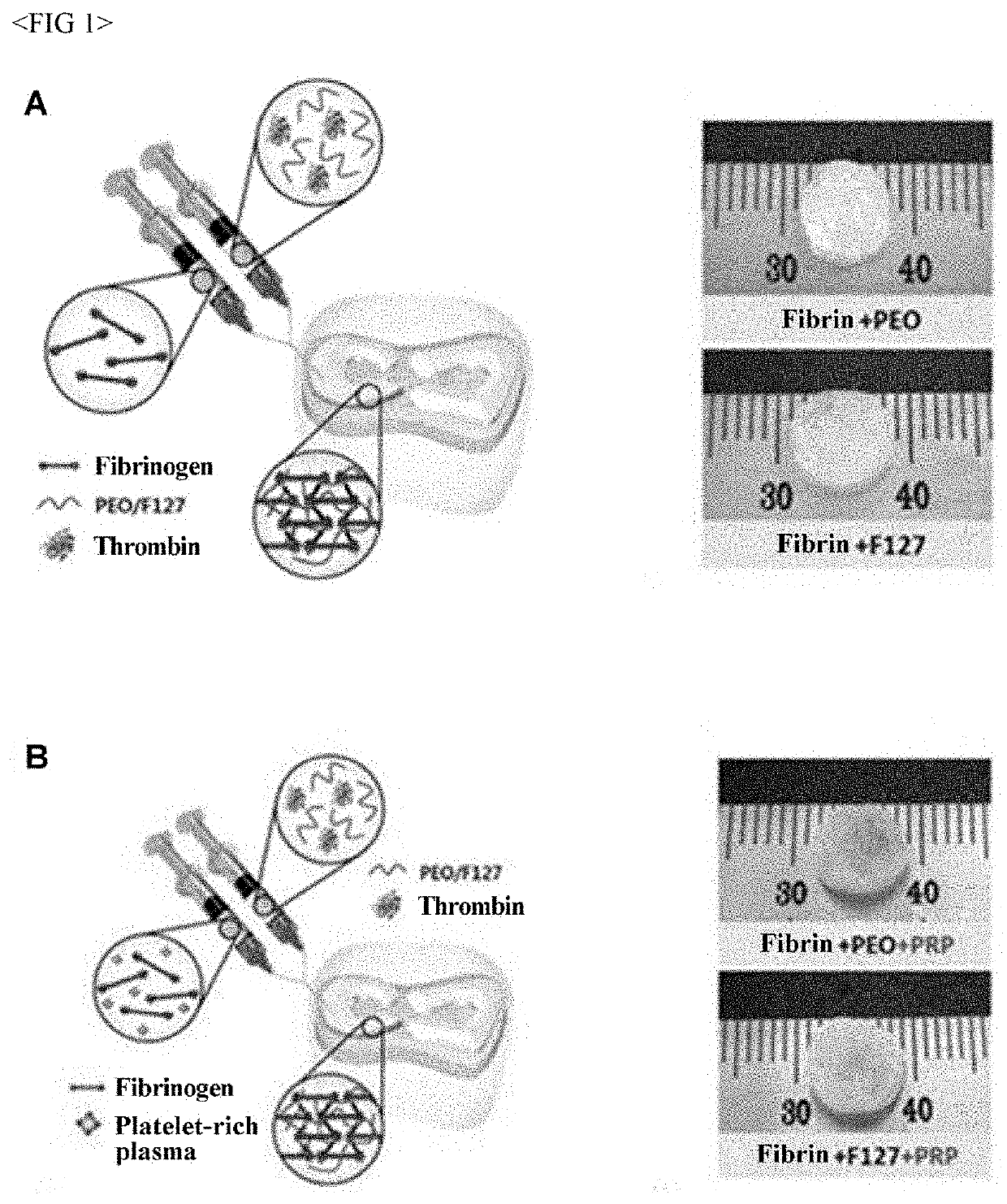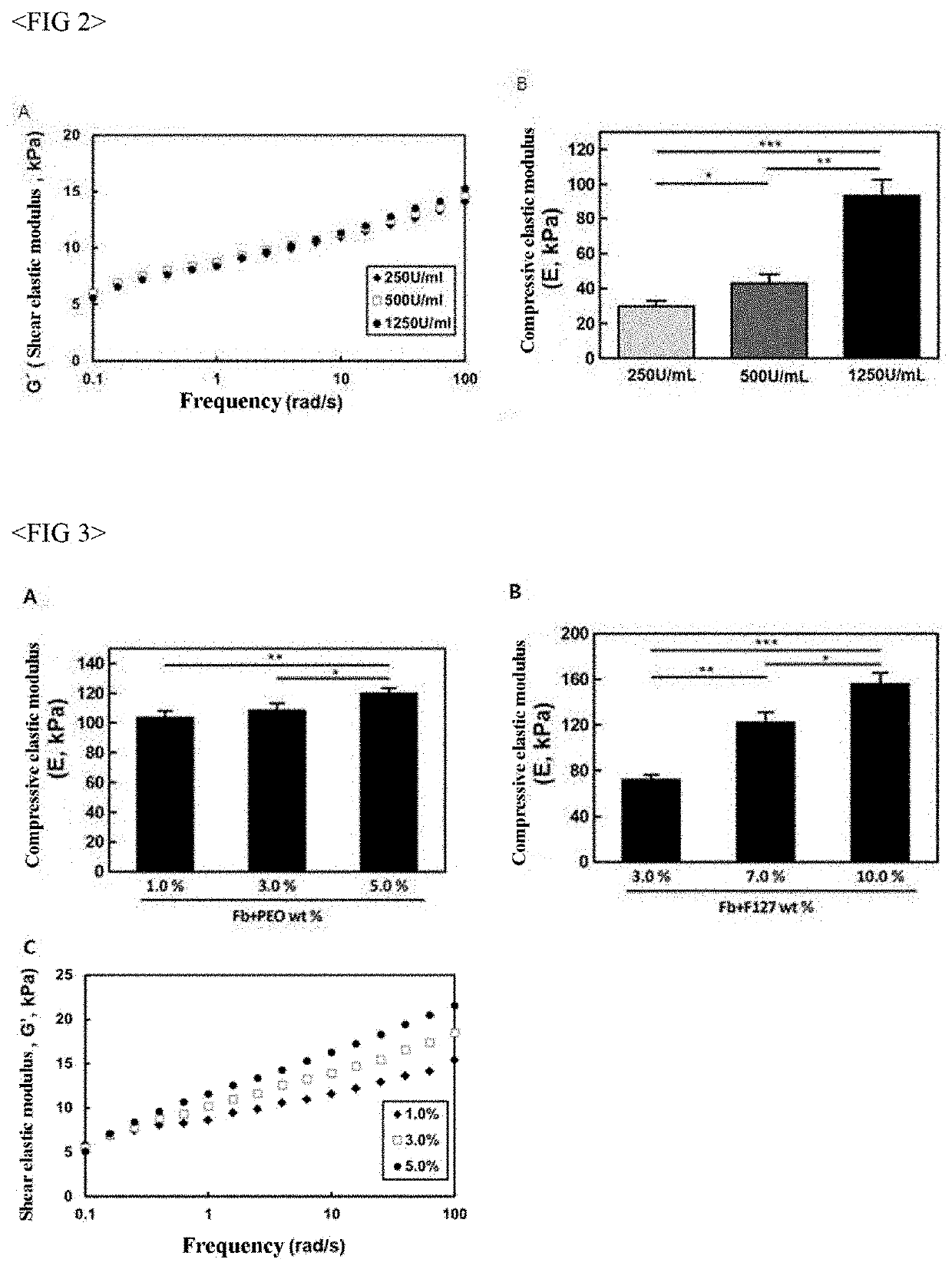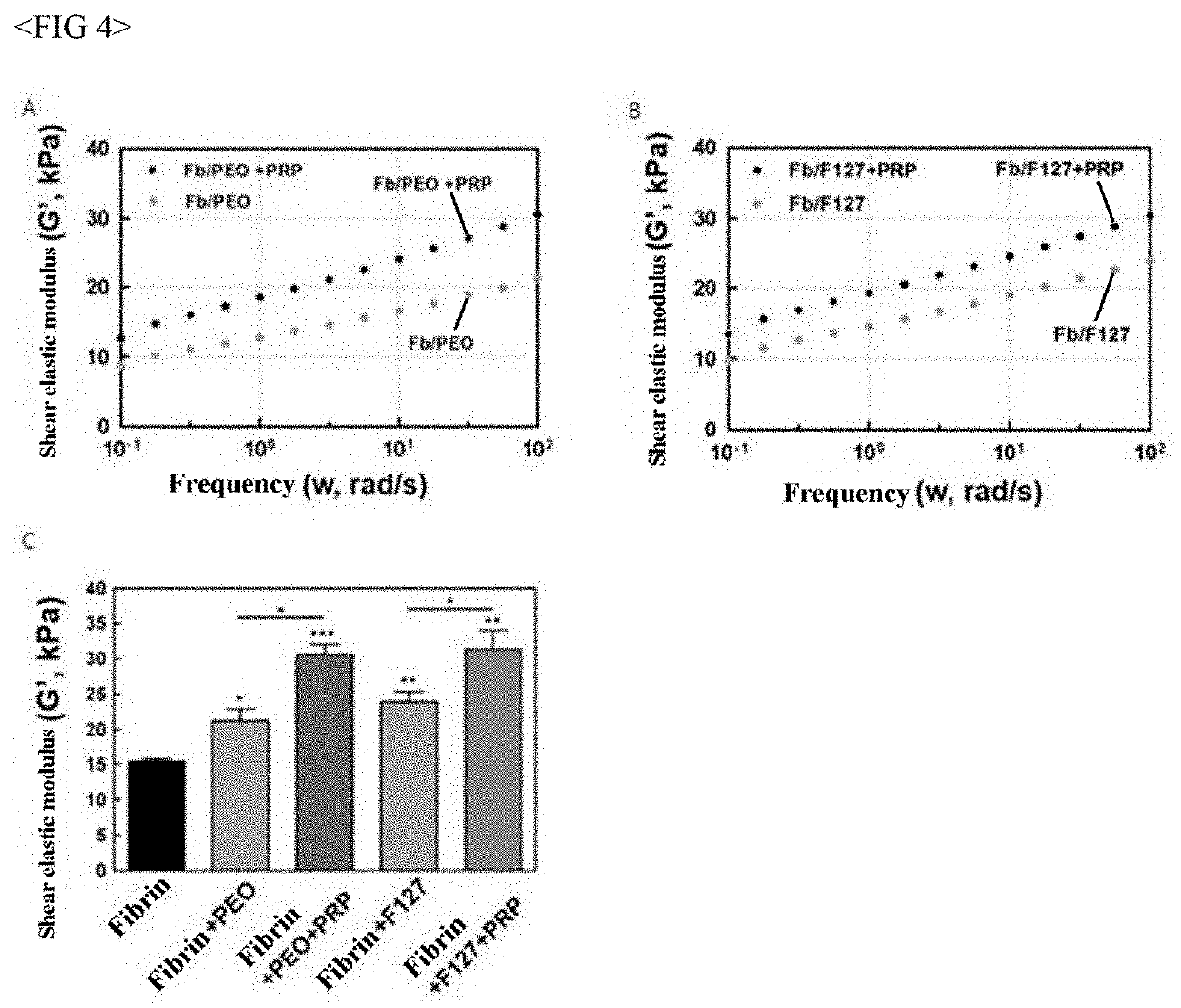Composition for regeneration of human fibrous cartilage or elastic cartilage
a technology of fibrous cartilage and collagen, applied in the direction of drug compositions, peptide/protein ingredients, prosthesis, etc., can solve the problems of meniscus tear, meniscus area tear, meniscus damage, etc., to improve the behavior of surrounding cells, improve the effect of regeneration of defect tissues, and facilitate injection
- Summary
- Abstract
- Description
- Claims
- Application Information
AI Technical Summary
Benefits of technology
Problems solved by technology
Method used
Image
Examples
example 1
n of First Solution and Second Solution for Hydrogel Production
[0064]In order to achieve the defected human tissue regeneration in only a minimally invasive manner, first and second solutions as materials for hydrogel production were produced.
[0065]1.1 Production of Hydrogel Production Materials Using Fibrin and Polyethylene Oxide (PEO)
[0066]The first solution and the second solution as materials for producing the hydrogel were produced using fibrin and PEO. The first solution was produced by mixing fibrinogen (Sigma-Aldrich) 10 to 1000 mg / ml and aprotinin (Sigma-Aldrich) 100 to 5500 KIU / ml. The second solution was produced by dissolving PEO and calcium chloride in a solvent in which thrombin (REYON Pharmaceutical Co., Ltd) powder was dissolved at a concentration of 100 to 2500 Unit (U) / mL, at 37° C. The concentration of PEO was 1 to 100 mg / ml, and the concentration of calcium chloride was 5 to 50 mg / ml. The hydrogel having the interpenetrating polymer network structure as produced ...
example 2
ation of Compressive Elastic Modulus and Shear Elastic Modulus of Hydrogel According to Thrombin Concentration
[0076]In order to identify the elastic modulus change of the hydrogel as produced according to combinations of concentrations of fibrinogen and thrombin, the shear elastic modulus and compressive elastic modulus were measured using a hydrogel formed in a mold having a diameter of 8.0 mm. The shear elastic modulus was measured using a rheometer (ARES-LS, TA Instruments), and a plate spacing was set to 900 μm, and a frequency condition was adjusted to a range from 0.1 to 100 Hz. The compressive elastic modulus was measured using a universal tensile tester (Instron 5966, Instron Corporation). In a stress-strain graph, the compressive elastic modulus (E) value was derived using a slope of a section with an elastic section. The concentration of the fibrinogen was fixed at a constant concentration of 100 mg / ml, while the thrombin concentration of the second solution was set to 500...
example 3
ation of Compressive Elastic Modulus in Addition of PEO and F127
[0078]The compressive elastic modulus of the hydrogel when PEO or F127 was added as the second solution was measured. The fibrinogen concentration in the first solution was fixed at a constant concentration of 100 mg / ml. The concentration of thrombin in the second solution was fixed at 2500 U / mL so that the concentration of thrombin in the final mixed composition was 1250 U / ml. The concentration of PEO in the second solution was changed to 2.0, 6.0, and 10.0% (w / v) so that the concentration of PEO in the final mixed composition was 1.0, 3.0, and 5.0% (w / v). The concentration of F127 was changed to 6.0, 14.0, and 20.0% (w / v) so that the F127 concentration in the final mixed composition was 3.0, 7.0, and 10.0% (w / v). Thu, the second solution was produced. The compressive elastic modulus change in each production example was identified and the results are shown in FIG. 3.
[0079]As shown in FIG. 3, when the hydrogel was prep...
PUM
| Property | Measurement | Unit |
|---|---|---|
| compressive elastic modulus | aaaaa | aaaaa |
| compressive elastic modulus | aaaaa | aaaaa |
| concentration | aaaaa | aaaaa |
Abstract
Description
Claims
Application Information
 Login to View More
Login to View More - R&D
- Intellectual Property
- Life Sciences
- Materials
- Tech Scout
- Unparalleled Data Quality
- Higher Quality Content
- 60% Fewer Hallucinations
Browse by: Latest US Patents, China's latest patents, Technical Efficacy Thesaurus, Application Domain, Technology Topic, Popular Technical Reports.
© 2025 PatSnap. All rights reserved.Legal|Privacy policy|Modern Slavery Act Transparency Statement|Sitemap|About US| Contact US: help@patsnap.com



